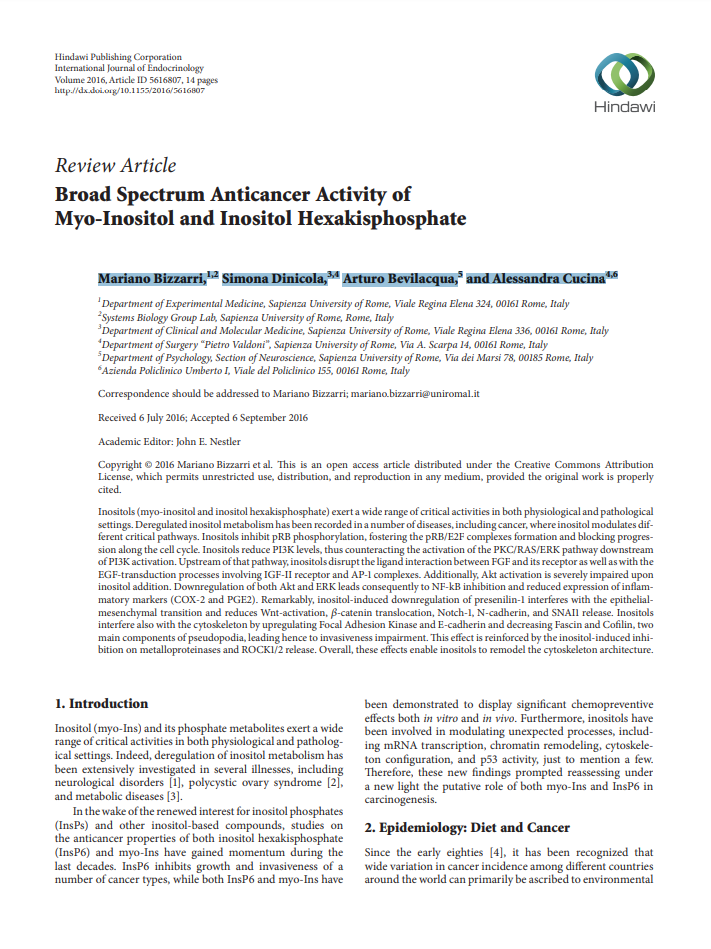Abstract
Inositols (myo-inositol and inositol hexakisphosphate) exert a wide range of critical activities in both physiological and pathological settings. Deregulated inositol metabolism has been recorded in a number of diseases, including cancer, where inositol modulates different critical pathways. Inositols inhibit pRB phosphorylation, fostering the pRB/E2F complexes formation and blocking progression along the cell cycle. Inositols reduce PI3K levels, thus counteracting the activation of the PKC/RAS/ERK pathway downstream of PI3K activation. Upstream of that pathway, inositols disrupt the ligand interaction between FGF and its receptor as well as with the EGF-transduction processes involving IGF-II receptor and AP-1 complexes. Additionally, Akt activation is severely impaired upon inositol addition. Downregulation of both Akt and ERK leads consequently to NF-kB inhibition and reduced expression of inflammatory markers (COX-2 and PGE2). Remarkably, inositol-induced downregulation of presenilin-1 interferes with the epithelial-mesenchymal transition and reduces Wnt-activation, β-catenin translocation, Notch-1, N-cadherin, and SNAI1 release. Inositols interfere also with the cytoskeleton by upregulating Focal Adhesion Kinase and E-cadherin and decreasing Fascin and Cofilin, two main components of pseudopodia, leading hence to invasiveness impairment. This effect is reinforced by the inositol-induced inhibition on metalloproteinases and ROCK1/2 release. Overall, these effects enable inositols to remodel the cytoskeleton architecture.

